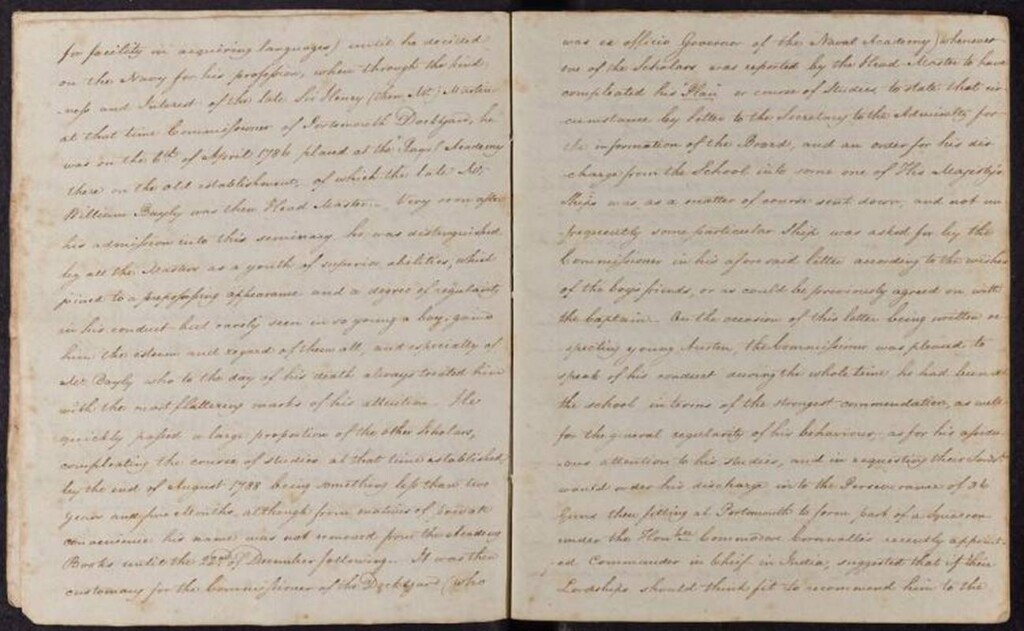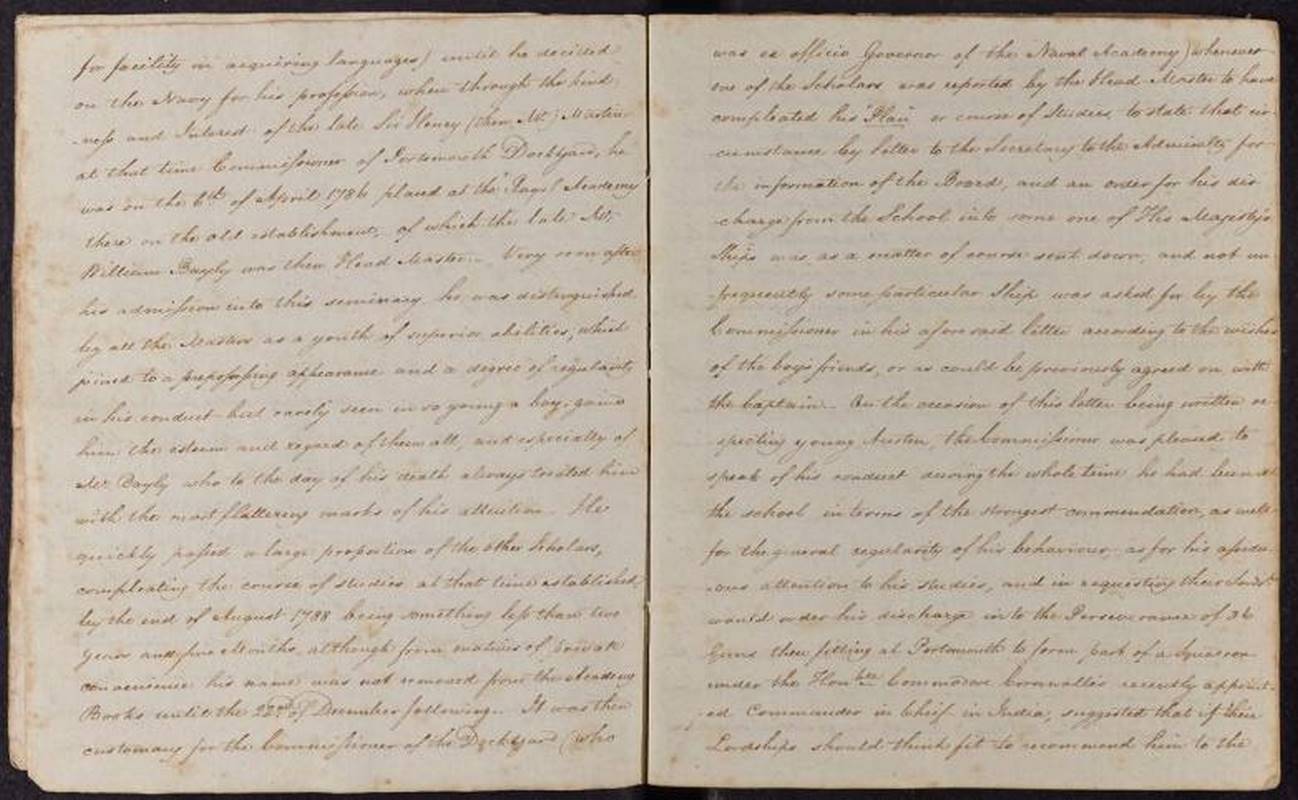
An interesting event happened in the domain of classic English literature recently when a 78-page memoir of Jane Austen’s brother came into the hands of the Jane Austen House Museum, who were having difficulty reading the handwriting.
Comparing it to a citizen science project, the museum initially invited anyone interested in helping to email a request for a single page to transcribe, but despite being dead for over 200 years, the response from Austen fans was simply extraordinary, as the numbers who stepped up to help nearly broke the museum’s email server.
Sir Francis Austen had a long career in the Royal Navy, and a manuscript biography of his life and a book of watercolor paintings he made were both acquired at auction by the Jane Austen House Museum with financial backing from a national non-profit.
Along with pages written about his work in the Navy, with stations as far as Egypt, India, and China, it also contains content about home life including his childhood at Chawton, and settling in Southampton with his sisters.
“Jane Austen left so little facts on her life,” said head of collections, interpretation, and engagement at Jane Austen’s House, Sophie Reynolds.
“This is another piece of the puzzle that can go into the museum. Scholars will find it fascinating to pull things out. It’s about filling in some more of the details that sort of surrounded her. We can see the world a little bit as she would have done.”
The manuscript is written in the third person, and the last third was likely done with an arthritic hand, making the already extremely cultured penmanship “spidery” and even more difficult to understand.
Writing Pride and Prejudice, Sense and Sensibility, Mansfield Park, Emma, Northanger Abbey, and Persuasion all from a cottage in the Hampshire village of Chawton, Austen experienced only moderate success in her lifetime.
MORE EXCERPTS FROM HISTORY: 2,000-Year-old Scroll Burnt in Pompeii Decoded and Read for First Time by Three Genius Students
Since her books first appeared in Richard Bentley’s Standard Novels series in 1833, fifteen years after her death, they have rarely been out of print, a testament to which was the number of people who emailed the museum about helping with the transcribing.
“We have been completely overwhelmed by the incredible response we have had to our transcription project, receiving thousands of responses in just 24 hours,” the museum wrote. “As a result, we are no longer able to receive applications. Thank you for your interest and support.”
It will be fascinating to hear what’s uncovered in the coming months.
SHARE This Intriguing Story With Anyone You Know Who Loves Austen’s Books…




















